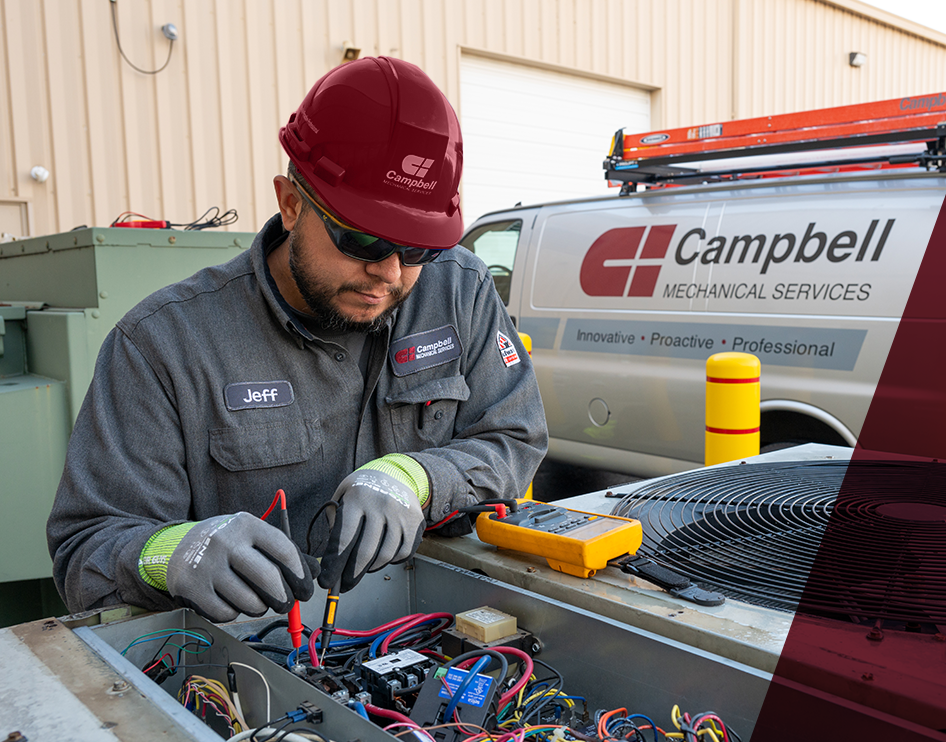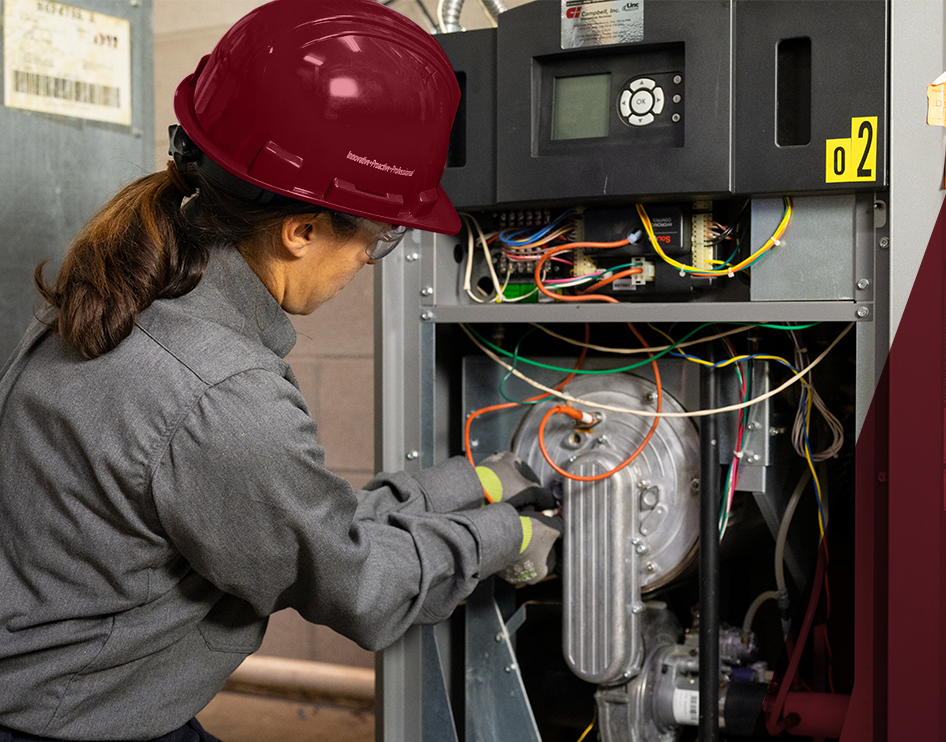
Indoor Air Quality for Safe, Comfortable Spaces
Resources, Equipment, and Expertise to Help You Achieve Indoor Air Quality Goals
Over the past few years, indoor air quality (IAQ) and indoor air quality services has increasingly become a topic of concern for building owners and building operators. And as members of the general public are also discovering the importance of safe, healthy, and comfortable indoor environments, ensuring good IAQ year-round is essential.
To help commercial building operators safeguard indoor spaces and address indoor air quality issues, organizations like ASHRAE and the EPA have long provided information and guidance at the national level. And locally, the Safety Council of Northwest Ohio recently shared information from the Commit to CARE initiative, which provides resources and tools for businesses to help protect against the spread of airborne disease through indoor air quality awareness and efforts.
Why Is Indoor Air Quality Important?
Ensuring good indoor air quality within our buildings is vital because most people spend about 90% of their time indoors as they go about their day in a range of living, working and visiting spaces. In addition to ensuring the comfort of our buildings, having proper ventilation helps to clean and refresh indoor air, which is essential for reducing the transmission of viruses that can be transmitted as airborne particles, such as COVID-19. According to the Commit to CARE’s resources, poor indoor air quality can lead to issues such as:
- Irritation of eyes, nose, and throat
- Headaches, dizziness, and fatigue
- Sick Building Syndrome (SBS)
- Acute respiratory infection
Having proper ventilation helps to clean and refresh indoor air, which is essential for reducing the transmission of viruses that can be transmitted as airborne particles.
Enhancing Indoor Air Quality Across Toledo and Surrounding Areas
In Toledo and throughout Northwest Ohio, maintaining optimal indoor air quality is more than a health concern; it’s a community imperative. Local government resources, such as the Toledo Health Department, emphasize the importance of well-ventilated spaces in our homes and businesses. They provide valuable insights and guidelines tailored to our unique climate and urban environment, making it easier for residents to navigate indoor air quality challenges.
As our community continues to address the remnants of previous health crises, such as COVID-19, the need for improved indoor air quality in places like businesses, schools, and community centers becomes more pressing. Many local businesses are faced with the challenge of renovating existing spaces to ensure they meet modern standards for safety and comfort—something that is essential for retaining customers, staff, and students alike.
Furthermore, initiatives like the Commit to CARE program support local efforts by offering tools and educational resources to tackle common air quality issues that affect Toledo's residents, including headaches, fatigue, and irritations that arise from inadequate air circulation. It's critical to know that improving indoor air quality not only enhances the wellbeing of everyone inside but also contributes positively to the local environment.
At our core, we understand the specific challenges that building owners and operators in Toledo face, including the balancing act of maintaining comfort while adhering to local regulations and health guidelines. With our comprehensive approach, residents can transform their indoor spaces into healthier environments, effectively combating sick building syndrome and other air quality-related issues that can impact everyday life.

We solve commercial HVAC and plumbing problems that others can’t. Whether it’s complex system challenges, outdated infrastructure, or urgent repair needs. Our expert team also helps you stay ahead with energy-efficient solutions that reduce operating costs and improve long-term performance.

Common Questions About Indoor Air Quality
What Is the Difference Between IAQ and IEQ?
IAQ, or Indoor Air Quality, is the assessment of the air inside a building and the effects the air quality might have on building occupants. For example, IAQ considers breathable air factors like dust, particulate matter, carbon monoxide, carbon dioxide, ozone, and VOCs.
IEQ, or Indoor Environment Quality, is about the range of conditions inside a building space that go beyond air quality. For example, IEQ factors include thermal comfort, moisture and dampness, acoustics, and even lighting.
What Is the Difference Between Sick Building Syndrome (SBS) and Building Related Illness (BRI)?
The term “sick building syndrome” (SBS) refers to a condition that occurs when building occupants experience adverse health effects that appear to be linked to time spent in an enclosed space of poor indoor air quality. While there is no established medical test to diagnose sick building syndrome, according to the EPA, symptoms may include headache, dizziness and nausea, dry cough, and irritation of the eyes, nose or throat. In contrast, the term “building related illness” (BRI) is used when symptoms of a diagnosable illness are identified and can be attributed to airborne building contaminants.
How Can I Tell If My Commercial Property Has Poor Indoor Air Quality?
Some of the most common warning signs of poor indoor air quality include:
- Stale or musty odors
- Excessive dust buildup
- Employee complaints about headaches, allergies, or fatigue
- Visible mold or mildew
- Humidity problems
If you notice these symptoms, it’s time to schedule an IAQ assessment with Campbell.
What Are the Benefits of Professional Indoor Air Quality Services?
Investing in professional IAQ services can:
- Improve employee wellness and productivity
- Enhance customer comfort and satisfaction
- Extend the lifespan of HVAC equipment
- Ensure compliance with indoor air quality standards
Contact Campbell today for expert Commercial Indoor Air Quality Services you can count on.


As a leading provider of commercial mechanical contractor services, we know preventative maintenance saves money and time.
